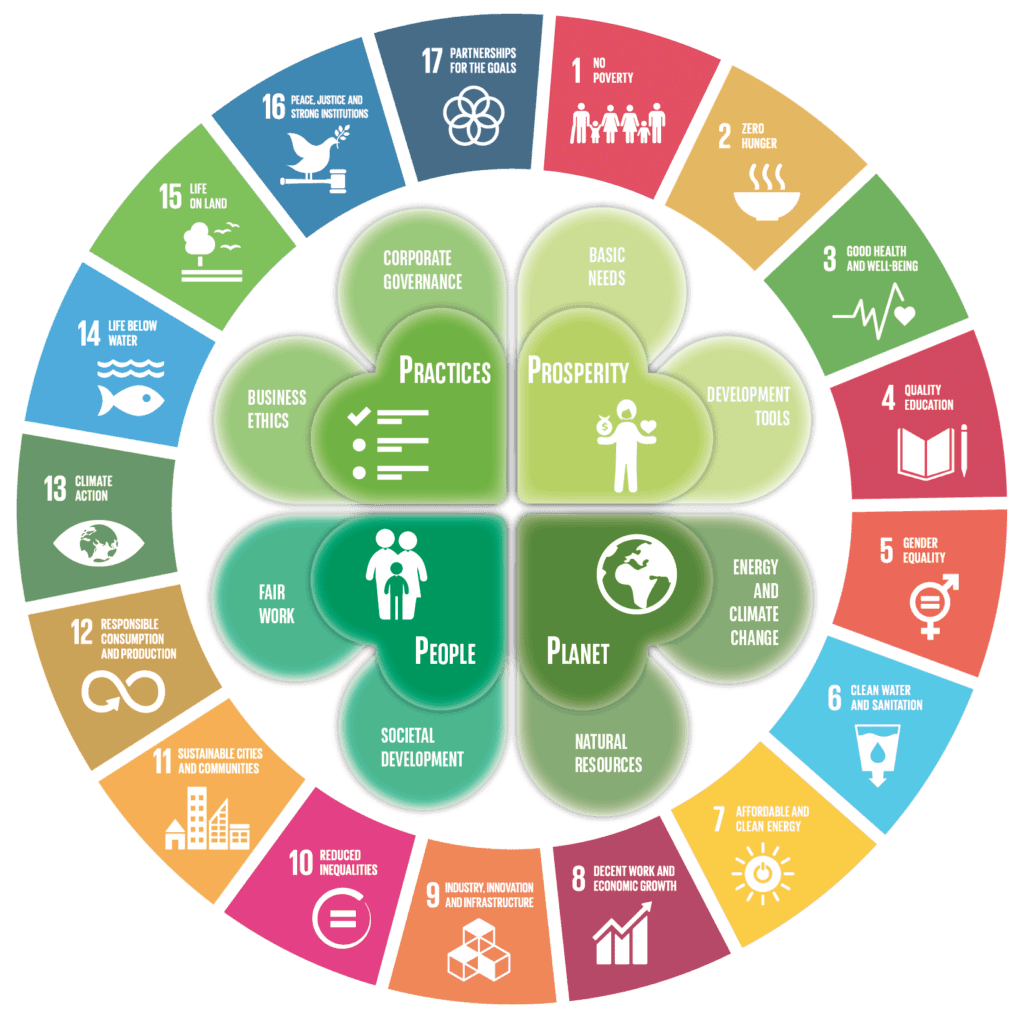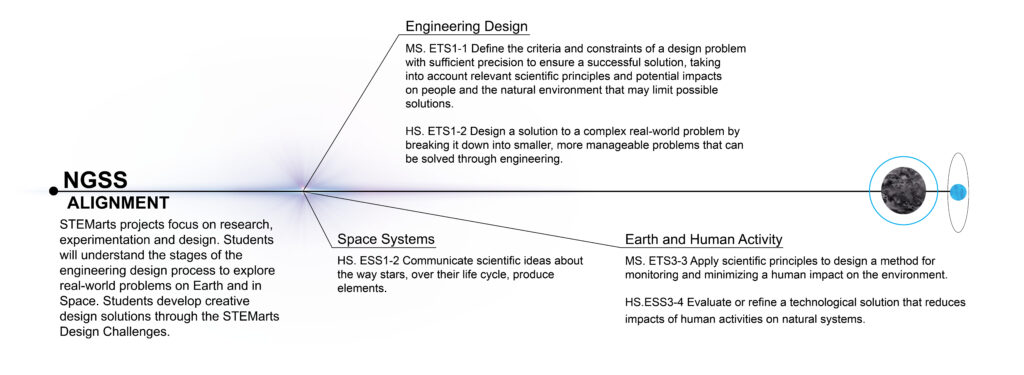
17 Goals for People, for Planet
The STEMarts Curriculum aligns to the United Nations Sustainable Development Goals which address current global challenges. Through this partnership students know that they are working on meaningful solutions toward building a sustainable future for all. The Sustainable Development Goals are a universal call to action to end poverty, protect the planet and improve the lives and prospects of everyone, everywhere. The 17 Goals were adopted by all UN Member States in 2015, as part of the 2030 Agenda for Sustainable Development which set out a 15-year plan to achieve the Goals. The BioSTEAM program addresses the following sustainable development goals.
Goal #17 PARTNERSHIPS FOR THE GOALS: Strengthen the means of implementation and revitalize the global partnership for sustainable development.
Goal #18 SPACE FOR ALL: HOW SPACE CAN BE USED IN SUPPORT OF THE 2030 AGENDA FOR SUSTAINABLE DEVELOPMENT
Goal #11 SUSTAINABLE CITIES AND COMMUNITIES: Make cities and human settlements inclusive, safe, resilient and sustainable
GOAL #4: QUALITY EDUCATION: Ensure inclusive and equitable quality education and promote lifelong learning opportunities for all.
Next Generation Science Standards
STEMarts curriculum aligns with the Next Generation Science standards (NGSS), and the P21 Framework for 21st Century Learning.
The STEMarts International Design Challenge ‘Space for Earth- Space for All’

MS. ETS1-1 Engineering Design: Define the criteria and constraints of a design problem with sufficient precision to ensure a successful solution, taking into account relevant scientific principles and potential impacts on people and the natural environment that may limit possible solutions.
MS-ESS3-3 Earth and Human Activity: Apply scientific principles to design a method for monitoring and minimizing a human impact on the environment.
HS.ETS1-2 Engineering Design: Design a solution to a complex real-world problem by breaking it down into smaller, more manageable problems that can be solved through engineering.
HS.ESSS3-4 Earth and Human Activity: Evaluate or refine a technological solution that reduces impacts of human activities on natural systems. Space Systems: Communicate scientific ideas about the way stars, over their life cycle, produce elements.
The BioMachine Design Challenge is designed to LS4.D Biodiversity & Humans.

The P21 Framework for 21st Century Learning was developed with input from educators, education experts, and business leaders to define and illustrate the skills, knowledge, expertise, and support systems that students need to succeed in work, life, and citizenship. The Framework continues to be used by thousands of educators and hundreds of schools in the U.S. and abroad to put 21st century skills at the center of learning. All elements of the Framework are critical to ensure 21st century readiness for every student.
Below are key definitions and core ideas from the NGSS that are investigated through this curriculum. You can share these core ideas with students to inform their design thinking.
National Core Arts Standards
STEMarts programming harmoniously integrates with the National Core Arts Standards, weaving together the core principles of creating, performing/presenting/producing, responding, and connecting. Our curriculum encourages students to actively create original works, whether through digital media, augmented reality, or other artistic mediums, fostering self-expression and innovation. Through performances, presentations, and productions, students showcase their creations, honing their skills in communication and presentation. Furthermore, our program encourages students to critically respond to art, technology, and scientific concepts, cultivating analytical thinking and reflection. By fostering connections between STEM disciplines and the arts, STEMarts empowers students to see the interconnectedness of knowledge domains, facilitating a holistic understanding of the world and their place within it.
